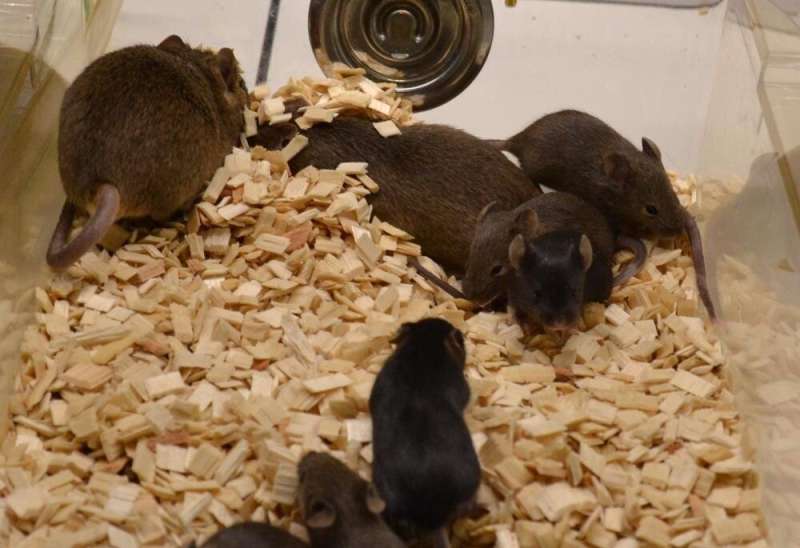Mice in the Biological Research Facility. Credit: The Francis Crick Institute
The Francis Crick Institute has published its 2021 statistics on animal research, as part of its commitment to openness about animal research.
Each year, the Crick publishes the number, type and severity of procedures involving animals carried out at the institute. In both 2019 and 2022, the Crick was recognized as one of UAR's Leaders in Openness.
The latest numbers, which are included in the government's statistics of scientific procedures on living animals in 2021, show that 183,363 procedures were carried out at the Crick last year. Of these, 91% involved mice, followed by zebrafish, 9%.
A list of ten U.K. institutions that carried out the most procedures on animals in 2021 has been published by Understanding Animal Research (UAR), with the Crick featuring second on the list.
The procedures reported were part of research into diseases affecting humans including: various types of cancer; neurological conditions such as stroke and dementia; and infectious diseases including tuberculosis, COVID-19 and flu. The procedures also included the creation of genetically modified animals, breeding, and the maintenance of established genetically modified mice and fish.
All Crick research follows the 3Rs approach to using animals, meaning:
- Animals are only used if there is no non-animal method to reach the same scientific objective
- The number of animals used is reduced as much as possible
- There is continuous work to refine and improve housing, care and experimental procedures, to minimize suffering of the animals.
Jan-Bas Prins, director of the Crick's Biological Research Facility (BRF), says: "The number of procedures carried out at the Crick has remained fairly steady from 2020 to 2021 and they are down from years before the pandemic. The Crick is committed to the 3Rs and to providing a research environment where the development of and access to non-animal methods is a matter of course."
Case study: How gene-editing could improve how we use animals in research
In December 2021, scientists at the Crick published research demonstrating how they used CRISPR-Cas9 gene editing technology to create female-only and male-only mice litters with 100% efficiency.
The method uses a two-part genetic system to inactivate embryos shortly after fertilization, allowing only the desired sex to develop. Such a genetically-based method to control the sex of offspring could drastically reduce culling in agriculture and research, industries where there is often a need for either male or female animals.
James Turner, author and group leader of the Sex Chromosome Biology Laboratory at the Crick says: "This work could have immediate and valuable impact in scientific laboratories, as we've shown how it is safe and effective in mice, a common mammal used in medical and scientific research. While a lot of research needs both sexes, there are areas of study where only one is needed. For example, when studying the reproductive system, sex-specific diseases, or certain hormones."
More information and figures from previous years can be found on the Crick's webpage.
Provided by The Francis Crick Institute
























